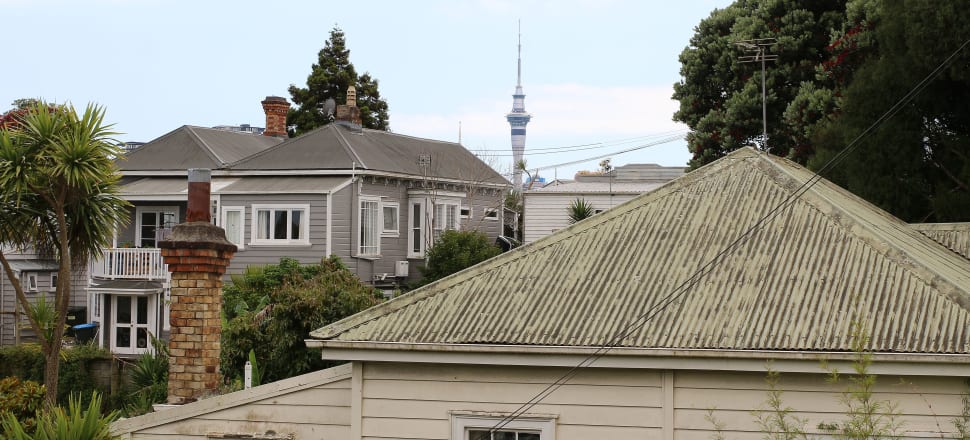
One of the government’s solutions to the housing crisis, allowing higher density building in city suburbs, has put it on a collision course with local councils. It is now faced with having to come down hard on recalcitrant councils if it wants them to toe the line. The Detail looks at who might come out on top in this battle between local and central governments.
Who would have thought the stoush over housing density would turn into a juicy soap opera?
But that's exactly how urban design expert Matthew Prasad describes the standoff between Christchurch City Council and the government after the council voted no to the new building rules.
"There's people on the sidelines with popcorn," he says.
"It's quite terrible in a nerdy way. It was thought that this wouldn't happen, no council would be that silly to say no.
"And lo and behold, one of them has."
Prasad, the principal urban designer at The Urban Advisory, winces when he talks about it to The Detail as we walk around Auckland's inner city. He says people in his industry don't know what the future of the medium density residential standards, or MDRS, will be and the row has left them even more confused and fearing that Christchurch City Council's actions could embolden other councils to also reject the rules.
"It will set a very interesting precedent for all future bills and actions and how commissioners get appointed and so forth."
Christchurch City Council last week voted against the government directive to introduce new housing intensification standards that would make it easier to build three units of up to three storeys on one site. Councillors were told beforehand if they did not pass it, a commissioner may be appointed to do it instead.
The Detail looks at the controversial national standards for six of our main cities - Auckland, Wellington, Hamilton, Rotorua, Tauranga and Christchurch - and the background to this unusual bipartisan deal.
Prasad is pro-density, even though he says the rules are not perfect. At the border of Eden Terrace and Grey Lynn, he points out examples of "good" high density developments, but says that the "ordinary" ones could one day become beautiful buildings too.
More intense housing brings more people into the area, making the costs of plumbing, roads, streetlights and amenities lower. With more people, community cornerstones like cafes and schools start to pop up, says Prasad.
But Prasad also says, for example, that 900,000 new homes are only good if they're based where people want to be living. Right now some areas are booming with new buildings while others are blocked off, and we need to enable housing everywhere.
The housing density rules apply almost everywhere in our six largest cities but the government has provided for some areas to be excluded where sensible. Prasad says some places, like sensitive ecological sites, won't be suitable for denser housing, and that's okay. These are called 'qualifying matters' in the legislation.
Prasad says the legislation opens the door for almost anything to be considered a qualifying matter and thus exempt from the new rules. He says councils have exploited this in a way that's not in the spirit of the legislation.
For example, Auckland Council is using 'special character' housing as a qualifying matter to exclude almost all of affluent suburbs like Grey Lynn (around 90 percent excluded), Ponsonby, and Devonport from medium density builds. Hamilton City Council has tried to claim that the entire city is a qualifying matter, because it all feeds into the Waikato River catchment.
New Zealand Herald senior political journalist Thomas Coughlan explains the bipartisan agreement aimed at tackling the decades-long housing crisis. He says despite Christchurch City Council's outright refusal to comply with the law the government will have the last word.
"The government can choose to do what it wants here, it can come down on Christchurch pretty hard and say no, you will have to do this and it could actually send a commissioner to Christchurch and notify a plan change. So the government can actually appoint someone on its behalf," says Coughlan.
"One way or another the government can't allow one council to decide it is above these rules because other councils would get the wrong idea too because you have to remember in Wellington and Auckland this process has been quite traumatic."
Prasad says the policy was developed behind closed doors and the bill was rushed through with very little consultation. During that time the government held daily Covid-19 press conferences but very little was communicated about rules that could have a huge impact on peoples' lives.
It left residents needlessly fearful that the next door bungalow would be bowled and replaced with three ugly, three-storey houses that would take away their sunlight and put more pressure on drains and car parking.
"I think rather than saying we don't want it tell us what you would like this to be, how would you want it to happen, what do you want the urban environment to be with these new rules. Because its not going away, they're here. You work with it and improve it, which is what I would like everybody to do," says Prasad.
Find out how to listen and subscribe to The Detail here.
You can also stay up-to-date by liking us on Facebook or following us on Twitter.








